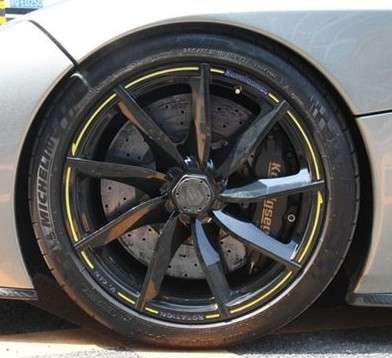
While tire sidewall repair may seem tricky and sometimes even impossible, it can be done. In fact, as soon as you start seeing any sidewall damage, you need to take action immediately.
Not everyone may realize how important sidewalls are to your car. By keeping the air inside, they hold up your tire and support your vehicle. However, when your tire is under inflated, the sidewall cannot properly support the load. The bottom part of the tire, the one in contact with the road, sags down. Without the air support the sidewall drags against the road causing friction and eventually damaging it. The gashes may be unnoticeable at first, but they undermine the structure of your tire. It is therefore very important to check your sidewalls frequently.
Find the Damage to the Sidewall
Sidewall damage may be hard to look for. To check if your sidewall has gashes, you can rub baby powder or any similar substance on the sidewall. The powder will stay in the cracks and leave them visible. Even small gashes can eventually lead to big trouble so you need to repair the tire as soon as possible.
Repair the Damage at Once
Some tire shops can fix sidewalls. It is a tricky procedure and the wheel has to be taken off of the car first. This is to check for any hidden damages inside.
Repairing the sidewall is a two-part process as the tire has two surfaces that need to be taken care of. To keep the air inside you need to patch the inner surface of the tire. Then, to keep the sidewall from incurring any more damage, you also need to fill in the gash from the outside. Doing just one is not sufficient to repair your sidewall. Be careful when having your sidewalls fixed though; improperly repaired sidewall damage may collapse when too much pressure is applied to it. This can lead to even more trouble.
Only two spot repairs can be done on any tire. Also holes that are wider than 1 inch and longer than 4 inches are too dangerous to repair. In cases like this, you need to replace the tire.
Maintenance is the Key
As with all problems, the best cure is prevention. Keep a tire gauge with you to monitor the tire pressure every few weeks and especially when you are travelling a long distance. If you do not feel confident doing it yourself, have your tires checked regularly for sidewall damage. Not only does it keep you safe but well-inflated tires also help you save on gas. You might consider getting "Run-flat tires". These specialized tires have thicker sidewalls that prevent excessive loss of air in case of a flat tire. While these tires might be pricey it could be well worth it when you know you and your family are safe.
Before you run into a problem with your tire sidewalls take care and give proper maintenance to your tires. It will do you a world of good.


